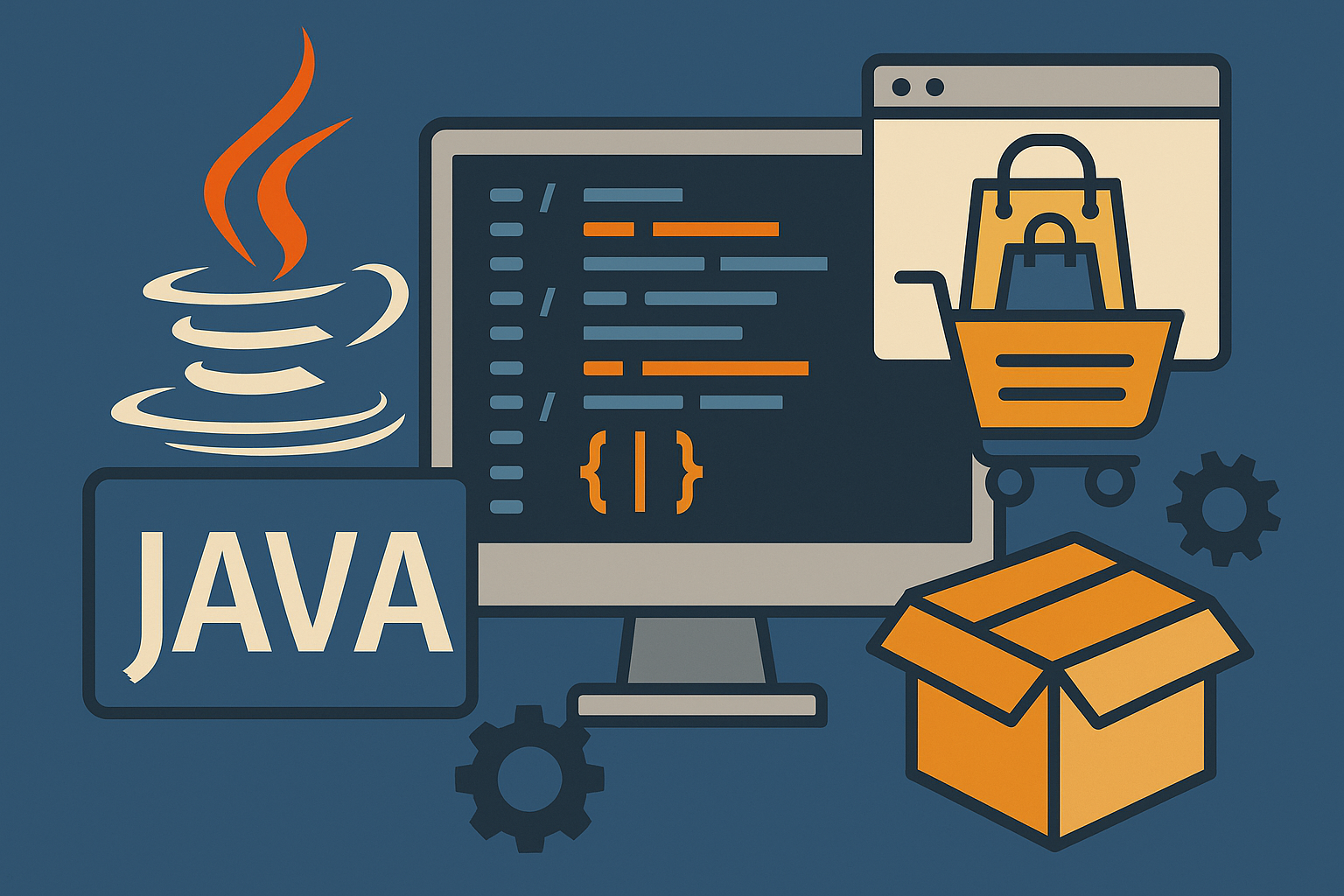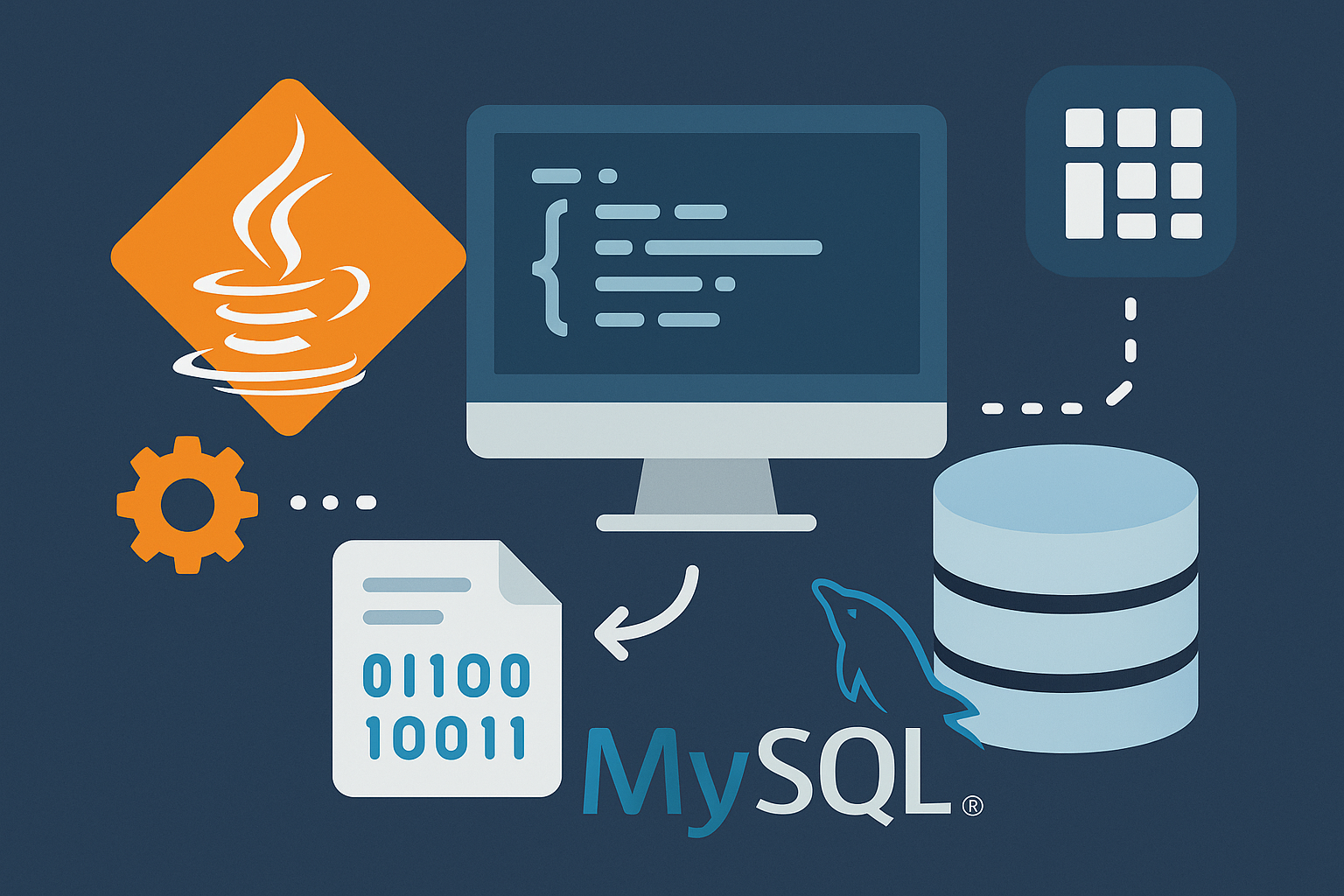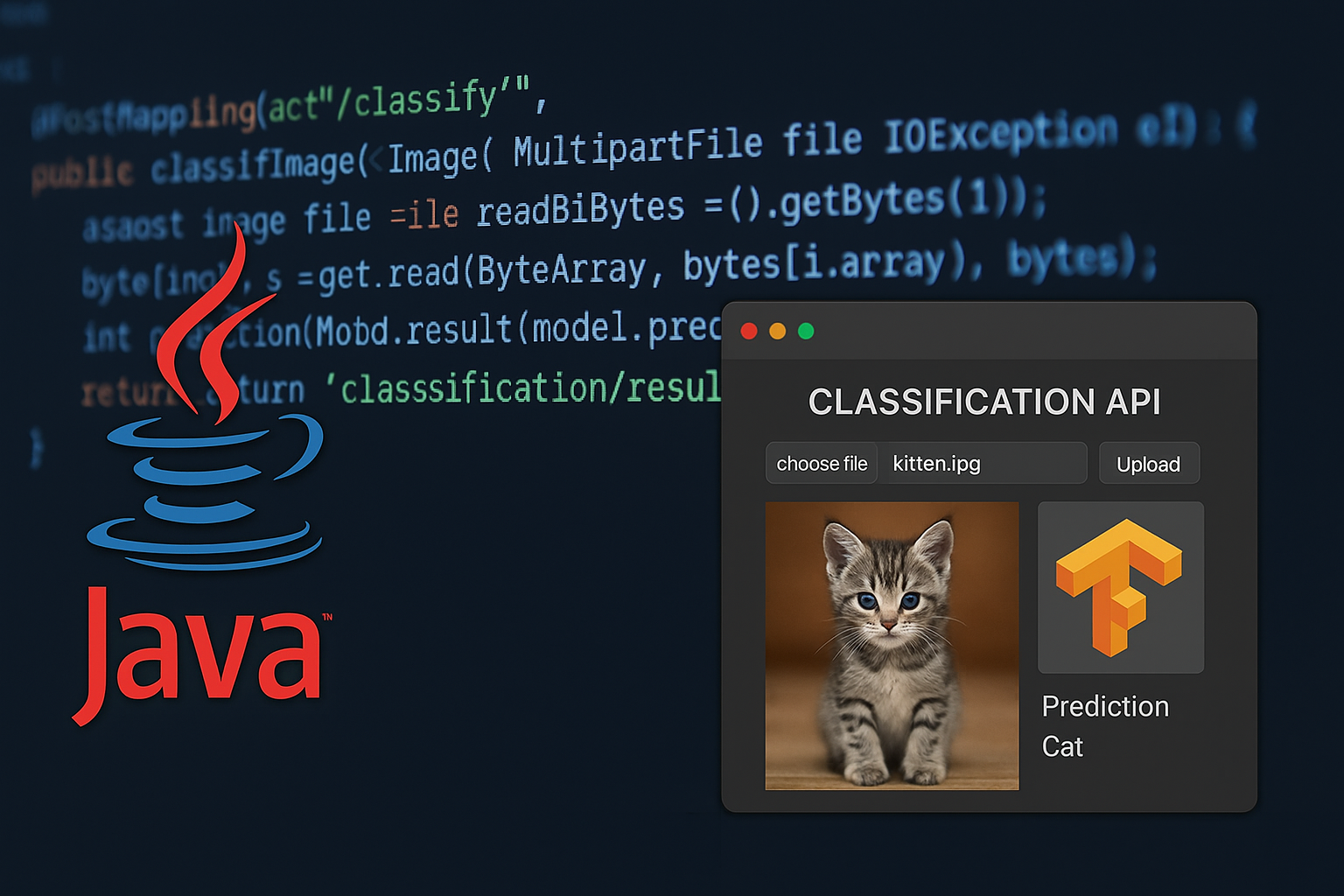"I want to implement an e-commerce system in Java."
"I don't really understand the big picture on the back end."
I'm sure there are many people who have this kind of concern.
In this article,E-commerce site backend using Java and Spring BootWe will explain how to build it.
Product registration, orders, inventory management, payment processing, etc.Learn basic functions by actually creating codeThis is the configuration.
So that even beginners can implement it step by step,Carefully explaining the code and designWe are doing it.
What is the E-commerce Backend?
It is the central location for managing products, orders, inventory, and payments.
Bottom line: The backend is the “core of data management and processing.”
Behind the scenes, ecommerce sites track information like:
- Registering, updating, and deleting product information
- Accepting and recording orders from users
- Inventory fluctuation management
- Payment and order status updates
We will implement this process using Java and Spring Boot.
Project configuration and initial settings
Build efficiently with Spring Boot
Conclusion: Generate template with Spring Initializr and connect to MySQL.
Select the following dependencies in Spring Initializr:
- Spring Web
- Spring Data JPA
- MySQL Driver
application.propertiesExample configuration:
spring.datasource.url=jdbc:mysql://localhost:3306/ecommerce spring.datasource.username=root spring.datasource.password=password spring.jpa.hibernate.ddl-auto=update
On the MySQL side, run the following command:
CREATE DATABASE ecommerce;
Product Entities and Registration Functions
Implement product registration and list display
Conclusion:ProductDefine your entities and create CRUD functionality.
Product.java
import jakarta.persistence.*; @Entity public class Product { @Id @GeneratedValue(strategy = GenerationType.IDENTITY) public Long id; public String name; public int price; public int stock; }
ProductRepository.java
import org.springframework.data.jpa.repository.JpaRepository; public interface ProductRepository extends JpaRepository {}
ProductController.java
import org.springframework.web.bind.annotation.*; import java.util.*; @RestController @RequestMapping("/products") public class ProductController { private final ProductRepository repo; public ProductController(ProductRepository repo) { this.repo = repo; } @GetMapping public List list() { return repo.findAll(); } @PostMapping public Product add(@RequestBody Product p) { return repo.save(p); } }
Order Processing Design and Implementation
Create a function to reduce inventory at the same time as placing an order
Conclusion: Order saving and inventory updating are done in a series of processes.
Order.java
import jakarta.persistence.*; @Entity public class Order { @Id @GeneratedValue(strategy = GenerationType.IDENTITY) public Long id; public Long productId; public int quantity; }
OrderRepository.java
import org.springframework.data.jpa.repository.JpaRepository; public interface OrderRepository extends JpaRepository {}
OrderController.java
import org.springframework.web.bind.annotation.*; @RestController @RequestMapping("/orders") public class OrderController { private final OrderRepository orderRepo; private final ProductRepository productRepo; public OrderController(OrderRepository orderRepo, ProductRepository productRepo) { this.orderRepo = orderRepo; this.productRepo = productRepo; } @PostMapping public String placeOrder(@RequestBody Order order) { Product p = productRepo.findById(order.productId).orElseThrow(); if (p.stock < order.quantity) return "Out of stock"; p.stock -= order.quantity; productRepo.save(p); orderRepo.save(order); return "Order completed"; } }
Common errors and solutions
- Error: Table not found
→ Solution:spring.jpa.hibernate.ddl-auto=updateIf the table does not exist in the DB, it will be created automatically. - Error: NullPointerException on Repository
→ Solution:@AutowiredCheck for missing constructor injection - Error: JSON parse error
→ Solution: During POSTContent-Type: application/jsonSet
Advanced: Payment, status and search functions
The following features can also be added:
- Payment status management (
isPaidFlag) - Search by product name (
findByNameContaining) - Get a list of orders
- Filter by date and price range
Summary of the completed code
src/ ├─ Product.java ├─ ProductRepository.java ├─ ProductController.java ├─ Order.java ├─ OrderRepository.java ├─ OrderController.java └─ application.properties
Example of operation check:
- Product List: GET
/products - Add product: POST
/products - Order: POST
/orders
Summary: E-commerce becomes visible
In this article,How to build an e-commerce backend using Java and Spring BootWe explained the following.
What I learned:
- Basic data design for products and orders
- Simple data manipulation using JPA
- API construction flow in Spring Boot
- Practical inventory management and order processing
By creating your own back-end system,You will be able to clearly understand what goes on behind the scenes of EC.
Please try your hand at developing a more advanced EC system by adding your own modifications!


